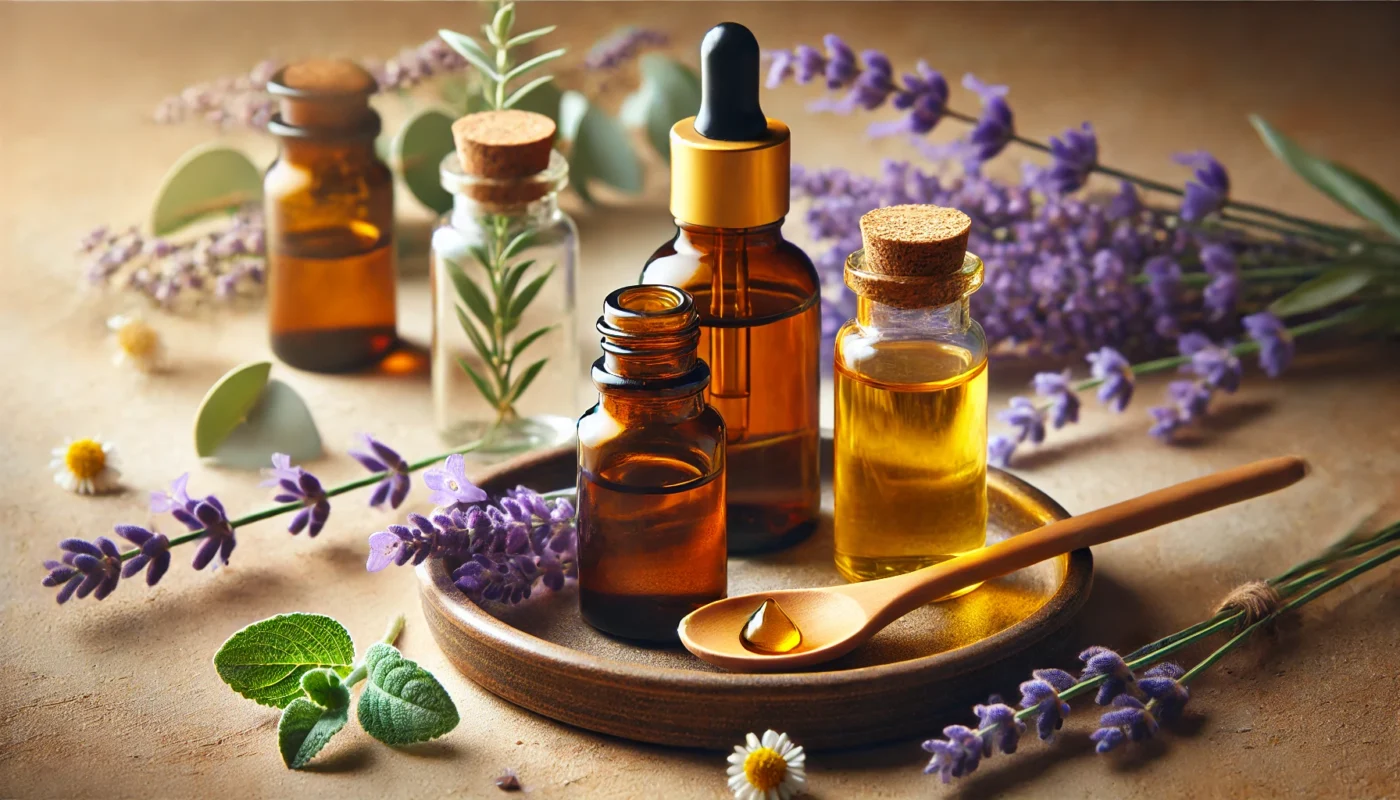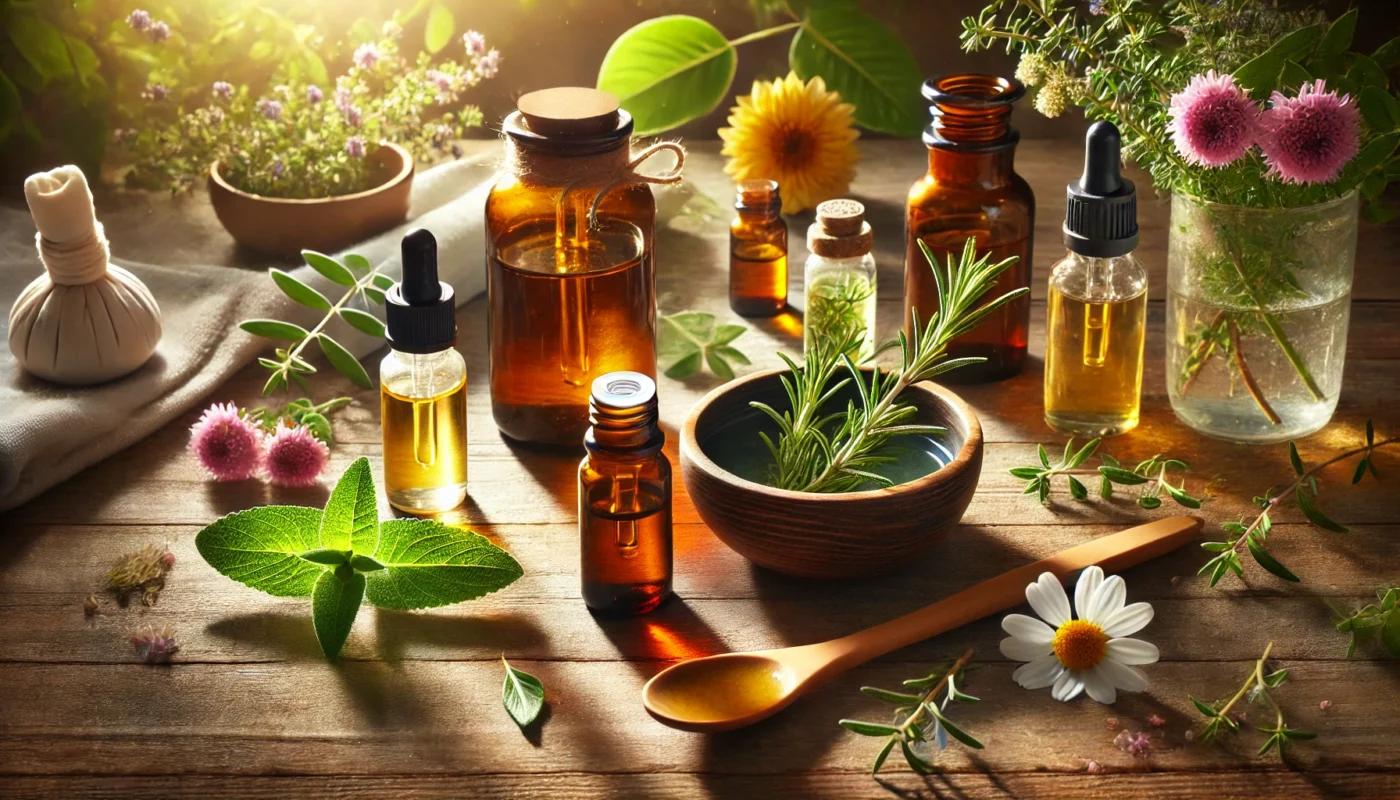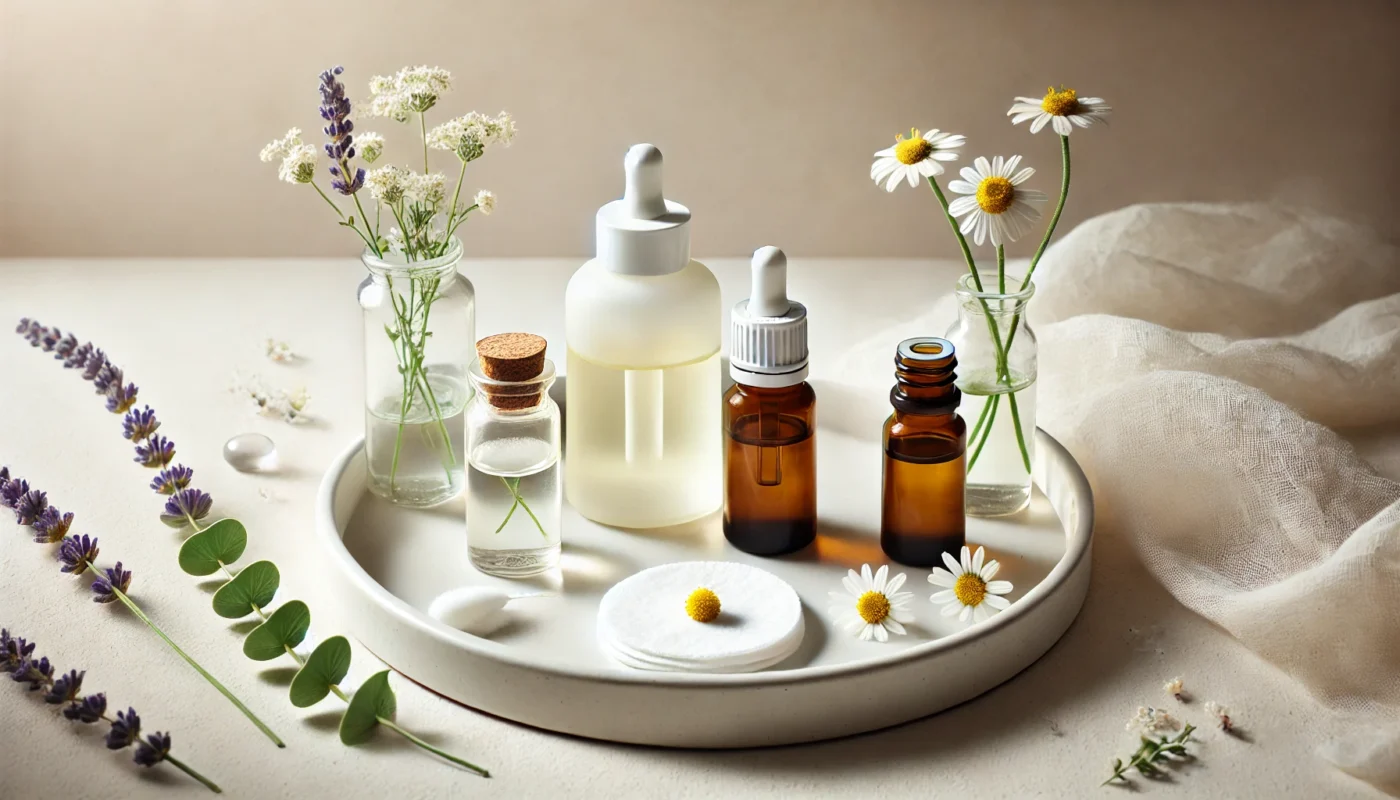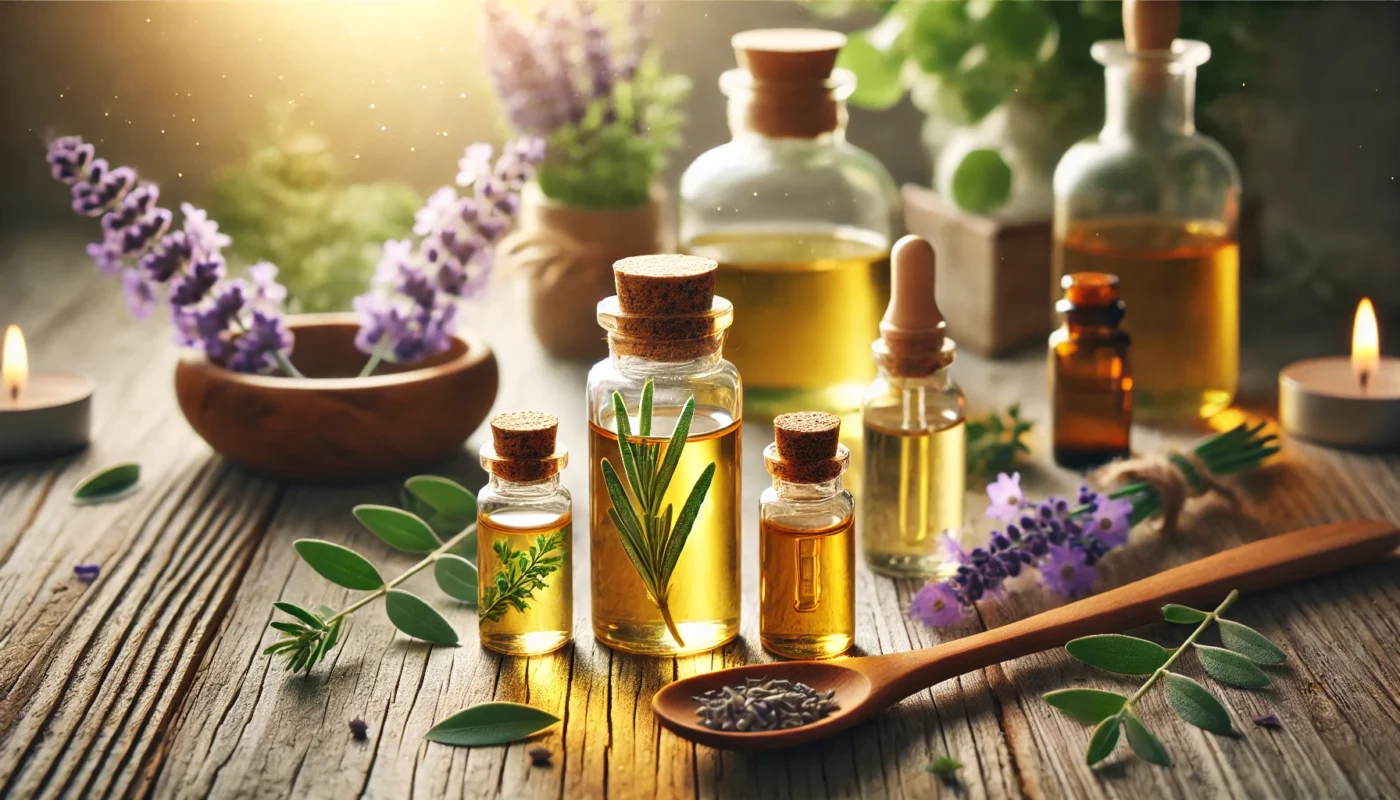Essential oils are concentrated plant extracts that capture the plant’s scent and flavor, or “essence.” The extraction process involves distillation or mechanical methods, such as cold pressing, to obtain the purest form of the plant’s natural oils. Each essential oil has unique compounds that contribute to its characteristic fragrance and therapeutic properties. When it comes to wound care, essential oils can offer antibacterial, antifungal, anti-inflammatory, and analgesic benefits.
You may also like: Home Remedies: Fight Cut Infections Naturally
The Science Behind Essential Oils and Wound Healing
The efficacy of essential oils in wound healing is supported by a growing body of scientific research. Studies have shown that certain essential oils contain compounds that can promote cell regeneration, reduce inflammation, and combat infection—all of which are crucial for effective wound healing. For instance, research into the chemical composition of oils like lavender and tea tree has revealed their ability to enhance the body’s natural healing processes. These studies often involve both in vitro and in vivo experiments, providing a comprehensive understanding of how these oils interact with biological tissues.
Antimicrobial Properties
Many essential oils possess strong antimicrobial properties, making them effective at preventing infections in cuts. For instance, tea tree oil is well-known for its antibacterial and antifungal capabilities, which can help keep wounds clean and free from harmful microbes. Oils like eucalyptus and oregano also exhibit antimicrobial properties, making them excellent alternatives for maintaining wound hygiene. These oils work by disrupting the cellular structures of bacteria and fungi, ultimately leading to their destruction. This antimicrobial action not only prevents infection but also minimizes the risk of complications during the healing process.
Anti-inflammatory Effects
Inflammation is a natural part of the wound healing process, but excessive inflammation can impede recovery and increase pain. Essential oils like lavender and chamomile have been shown to reduce inflammation, thus promoting faster healing and reducing discomfort. The anti-inflammatory effects of these oils are due to their ability to inhibit the production of pro-inflammatory cytokines. By modulating the body’s inflammatory response, these oils can alleviate swelling and redness, making the healing process more comfortable. Additionally, their soothing aromas can have a calming effect on the nervous system, further aiding in pain management.
Promotion of Cell Regeneration
Some essential oils, such as helichrysum and frankincense, are noted for their ability to promote cell regeneration. This property is essential for the repair of damaged skin and tissues, aiding in the recovery of cuts. The regenerative benefits of these oils are attributed to their rich content of compounds like terpenes and esters, which stimulate the production of new cells. By enhancing cellular turnover, these oils not only speed up healing but also improve the overall appearance of the skin, minimizing scarring. Moreover, the use of these oils can support the maintenance of skin elasticity and resilience, crucial for long-term skin health.

The Best Essential Oils for Healing Cuts
When considering essential oils for wound care, it’s important to select those that have been proven to be both effective and safe. The right essential oil can significantly enhance the healing process by addressing specific needs such as infection prevention, inflammation reduction, or tissue repair. Below are some of the best essential oils for healing cuts.
Tea Tree Oil
Tea tree oil is a staple in wound care due to its potent antibacterial and antifungal properties. It can help prevent infections in cuts and accelerate the healing process. To use, dilute a few drops of tea tree oil with a carrier oil, such as coconut or almond oil, and apply to the affected area. Additionally, tea tree oil’s antiseptic properties make it a versatile remedy not only for cuts but also for other skin issues like acne and insect bites. Its natural, sharp scent can also serve as a deterrent to insects, providing a dual benefit of protection and healing.
Lavender Oil
Lavender oil is renowned for its calming scent and anti-inflammatory properties. It can soothe the skin, reduce swelling, and promote faster healing. Lavender oil can be applied directly to minor cuts or diluted for more sensitive skin areas. Furthermore, its analgesic properties help alleviate pain and discomfort associated with cuts and bruises. The fragrant aroma of lavender also has aromatherapeutic benefits, reducing stress and anxiety, which can indirectly contribute to a more efficient healing environment by supporting overall well-being.
Helichrysum Oil
Helichrysum oil is less well-known but highly effective in wound care. It has regenerative properties that aid in cell repair and can reduce scar formation. Mixing helichrysum oil with a carrier oil and applying it to the wound can enhance healing. Known as the “immortal” or “everlasting” oil, helichrysum is particularly valued for its ability to promote skin regeneration and improve the texture and tone of healing skin. Its anti-inflammatory and antioxidant properties further support skin health, making it an excellent choice for those looking to minimize the visible effects of skin trauma.
Chamomile Oil
Chamomile oil is gentle and has strong anti-inflammatory properties, making it ideal for sensitive skin and irritated wounds. It can be used to reduce redness, swelling, and pain associated with cuts. Roman chamomile and German chamomile are the two most common varieties, both offering significant benefits in wound care. Besides its physical healing properties, chamomile oil also provides emotional support through its soothing aroma, which can help reduce stress and promote relaxation, creating an optimal environment for healing.
Frankincense Oil
Frankincense oil is a powerful healer known for its ability to promote cell regeneration and reduce inflammation. It can be particularly useful for deeper cuts and wounds where tissue regeneration is necessary. This oil’s astringent properties help tighten the skin, contributing to wound closure and reducing the risk of infection. Moreover, frankincense is revered for its spiritual and emotional benefits, often used in meditation to promote a sense of peace and tranquility, which can be beneficial for holistic healing practices.
Practical Application and Safety Tips
While essential oils can be incredibly beneficial in wound care, it’s crucial to use them safely and appropriately. Understanding the correct methods of application and dilution is essential to prevent adverse reactions and maximize healing benefits.
Dilution is Key
Essential oils are highly concentrated and can cause irritation if applied directly to the skin. Always dilute essential oils with a carrier oil before applying them to your skin. A common dilution ratio is 3-5 drops of essential oil per teaspoon of carrier oil. Carrier oils, such as jojoba, sweet almond, or grapeseed oil, not only dilute essential oils but also provide additional moisturizing benefits to the skin. Proper dilution ensures that the essential oils can be absorbed effectively without causing irritation or adverse effects, especially on sensitive or compromised skin.
Patch Test Before Use
Before applying any essential oil to a wound, conduct a patch test on a small area of skin to ensure there is no allergic reaction. Apply the diluted oil to a discreet area, such as the inner forearm, and wait 24 hours to check for any adverse reactions. This precautionary step is crucial, as individual sensitivities can vary widely. Monitoring for signs of irritation, such as redness, itching, or swelling, can prevent more serious reactions when using the oils on larger areas or on open wounds.
Consult a Healthcare Professional
If you have a significant wound or are unsure about using essential oils, consult with a healthcare professional before proceeding. Essential oils should complement, not replace, traditional medical treatment. A healthcare provider can offer guidance on integrating essential oils with conventional treatments, ensuring a safe and effective healing process. Additionally, for individuals with pre-existing health conditions or those taking medications, professional advice can help avoid potential interactions or contraindications with essential oil use.

Integrating Essential Oils into Your Wound Care Routine
Incorporating essential oils into your wound care regimen can be a simple and effective way to enhance healing. By following a systematic approach, you can effectively utilize the therapeutic properties of essential oils to support your body’s natural healing processes.
Step-by-Step Guide to Using Essential Oils for Cuts
- Clean the Wound: Ensure the cut is thoroughly cleaned with water and mild soap. Pat dry with a clean towel to create a sterile environment for healing.
- Choose Your Essential Oil: Select an essential oil based on your specific needs—antimicrobial, anti-inflammatory, or regenerative properties. Consider the type and severity of the wound when choosing the appropriate oil.
- Dilute the Oil: Mix your chosen essential oil with a carrier oil to ensure safe application. Adjust the dilution based on the sensitivity of the skin area and the concentration of the essential oil.
- Apply the Oil: Gently apply the diluted oil to the wound using a clean cotton swab or your fingertips. Ensure even coverage without applying excessive pressure to avoid irritating the wound.
- Cover the Wound: If necessary, cover the wound with a bandage to protect it from further irritation and contamination. Use breathable materials to allow air circulation while keeping the area clean.
- Repeat as Needed: Apply the essential oil blend 1-2 times daily until the wound has healed. Monitor the wound’s progress and adjust the frequency of application based on its healing stage and response to treatment.

Conclusion: Embracing Natural Healing
Essential oils offer a natural and effective solution for enhancing wound healing and maintaining healthy skin. By understanding their properties and how to use them safely, you can take advantage of these potent plant extracts to support your body’s natural healing processes. Whether you’re a fitness enthusiast, health aficionado, or someone recovering from an injury, integrating essential oils into your wound care routine can be a valuable addition to your holistic health approach. By embracing the natural healing power of essential oils, you can foster a deeper connection to nature and promote overall well-being, making them a cornerstone of a balanced and health-conscious lifestyle.
Further Reading:
Essential Oils For Cuts and Wounds | Antiseptic Oils For Scrapes
Five Amazing Essential Oils for Wound Healing
Natural Remedies, Essential Oils, Wound Care, Antimicrobial Properties, Anti-inflammatory Effects, Cell Regeneration, Tea Tree Oil, Lavender Oil, Helichrysum Oil, Chamomile Oil, Frankincense Oil, Skin Health, Holistic Healing, Natural Healing, Aromatherapy, DIY Remedies
Important Note: The information contained in this article is for general informational purposes only, and should not be construed as health or medical advice, nor is it intended to diagnose, prevent, treat, or cure any disease or health condition. Before embarking on any diet, fitness regimen, or program of nutritional supplementation, it is advisable to consult your healthcare professional in order to determine its safety and probable efficacy in terms of your individual state of health.
Regarding Nutritional Supplements Or Other Non-Prescription Health Products: If any nutritional supplements or other non-prescription health products are mentioned in the foregoing article, any claims or statements made about them have not been evaluated by the U.S. Food and Drug Administration, and such nutritional supplements or other health products are not intended to diagnose, treat, cure, or prevent any disease.

